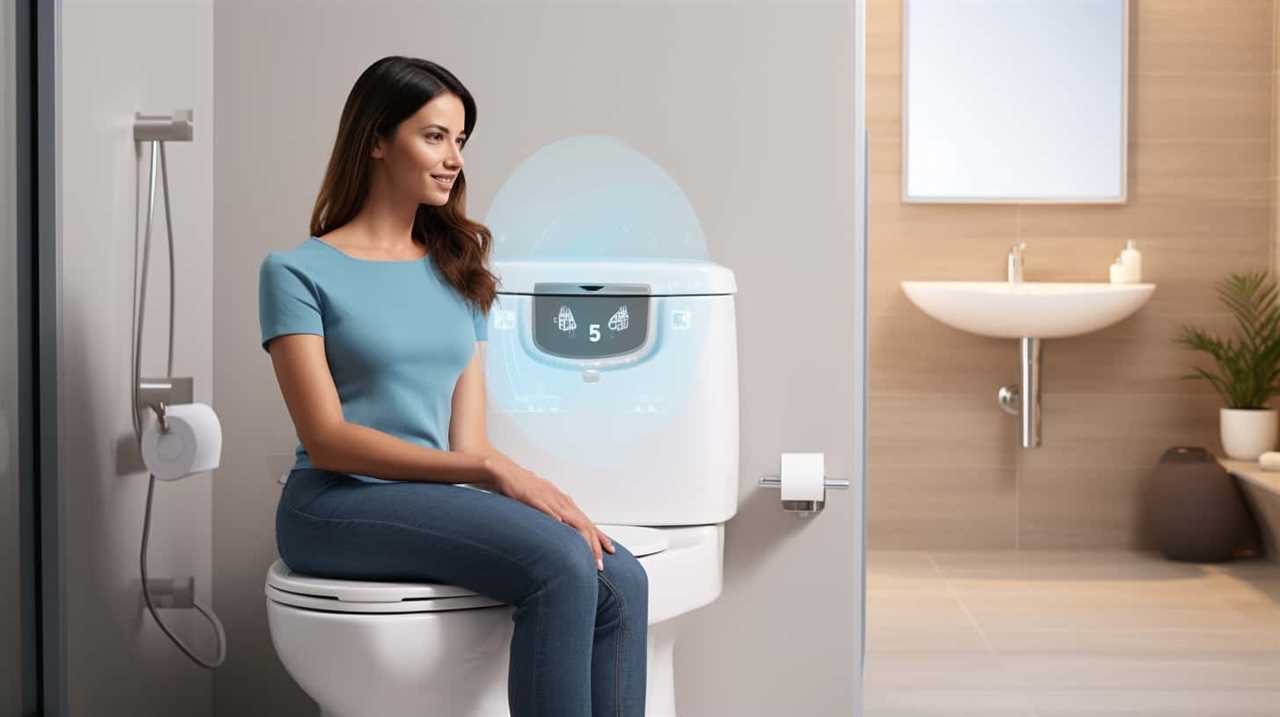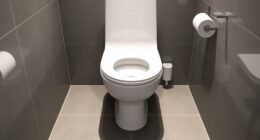We often overlook the significance of the contemporary flush toilet, yet its development was a key turning point in our pursuit of better hygiene and sanitation practices.
In this article, we will explore the historical factors that led to the development of this ingenious device.
From ancient sewage systems to public health movements, we will delve into the intricate web of influences that shaped the flushing toilet as we know it today.
Join us as we unravel the fascinating story of its creation.

Key Takeaways
- The invention of the flushing toilet addressed the lack of reliable methods for disposing of human waste, improving sanitation and hygiene.
- Ancient civilizations developed rudimentary sewage systems, such as underground channels made of clay pipes or stone conduits, but these still had unsanitary conditions and spread diseases.
- Flushing toilets revolutionized waste disposal by efficiently removing waste, preventing bacterial accumulation, reducing odors, and decreasing the spread of infections.
- The invention of the S-Trap and water-seal traps further improved toilet design and sanitation, creating barriers to prevent foul odors and harmful gases from escaping.
Early Sanitation Challenges
One of the earliest sanitation challenges we faced was the lack of a reliable method for disposing of human waste. In the early days, civilizations struggled to find efficient ways to manage their waste, leading to the development of early plumbing systems and historical toilet designs.
Ancient civilizations like the Indus Valley and the Romans had rudimentary sewage systems that relied on gravity to carry waste away from populated areas. These systems consisted of underground channels made of clay pipes or stone conduits, which transported waste to nearby rivers or designated disposal areas. Although these early plumbing systems were a significant improvement, they were far from perfect, often resulting in foul odors, unsanitary conditions, and the spread of diseases.
Thus, the need for a more sophisticated and hygienic solution became apparent, leading to the invention of the flushing toilet.
Ancient Toilets and Sewage Systems
When examining the history of toilets and sewage systems, it’s important to consider the early methods of sewage disposal utilized by ancient civilizations. These early systems consisted of simple pit latrines or cesspools, where waste would accumulate until it was manually removed.

However, as societies developed, advancements in sanitation began to emerge, such as the invention of underground sewer systems and the use of water to flush waste away. Understanding the evolution of these ancient toilets and sewage systems provides valuable insight into the origins of modern sanitation practices.
Early Sewage Disposal Methods
Throughout history, humans have developed various methods for disposing of sewage, including the use of ancient toilets and sewage systems. Early sewage management was crucial for maintaining public health and preventing the spread of diseases.
Here are three key historical sewage systems:
- Ancient Roman Toilets:
- The Romans designed elaborate public toilets called latrines.
- These latrines featured a series of stone or marble seats with a channel of flowing water beneath them.
- Waste would flow through the channels into the city’s extensive sewage system.
- Indus Valley Civilization:
- The ancient Indus Valley Civilization had well-planned cities with advanced sewage systems.
- They constructed sophisticated drainage systems that carried waste away from residential areas.
- The sewage was directed into large underground sewage drains, ensuring proper disposal.
- Medieval Sewers in Europe:
- In medieval Europe, cities like London and Paris developed underground sewage systems.
- These systems consisted of tunnels and channels that carried waste away from populated areas.
- The sewage would eventually flow into rivers or other bodies of water, causing pollution and health hazards.
Understanding the early sewage disposal methods used by ancient civilizations provides valuable insights into the development of modern sanitation practices.

Advancements in Sanitation
So, how did these early sewage disposal methods eventually lead to the invention of the flushing toilet? Well, advancements in sanitation played a crucial role in improving public health and hygiene. Ancient civilizations developed innovative systems to manage waste and prevent the spread of diseases. Let’s take a look at some of these advancements in the table below:
| Advancements | Description |
|---|---|
| Ancient Toilets | Early toilets were often simple holes in the ground, but some civilizations, like the Indus Valley Civilization, had more sophisticated systems with water flushing mechanisms. |
| Sewage Systems | Ancient Romans were pioneers in developing complex sewage systems, including underground sewers, public toilets, and even wastewater treatment plants. |
These advancements in sanitation laid the foundation for the invention of the flushing toilet by addressing the need for proper waste disposal and improved hygiene. With the knowledge gained from these early sanitation practices, engineers and inventors were able to develop more advanced systems that eventually led to the modern flushing toilet.
Now, let’s explore the need for improved hygiene and the factors that contributed to the invention of the flushing toilet.
The Need for Improved Hygiene
When it comes to the need for improved hygiene, there are several important points to consider.

Firstly, before the invention of flushing toilets, sanitation practices were rudimentary at best, leading to unsanitary conditions and the spread of diseases.
Secondly, the introduction of flushing toilets played a significant role in disease prevention, as it allowed for the proper disposal of waste and the reduction of harmful bacteria and pathogens.
Lastly, the impact of flushing toilets on daily life can’t be overstated, as it provided individuals with a clean and convenient way to maintain personal hygiene, ultimately improving overall health and well-being.
Sanitation Before Toilets
Before toilets, we faced significant challenges in maintaining proper hygiene. Early plumbing systems and the evolution of toilets played a crucial role in improving sanitation practices. Here are three key aspects to consider:
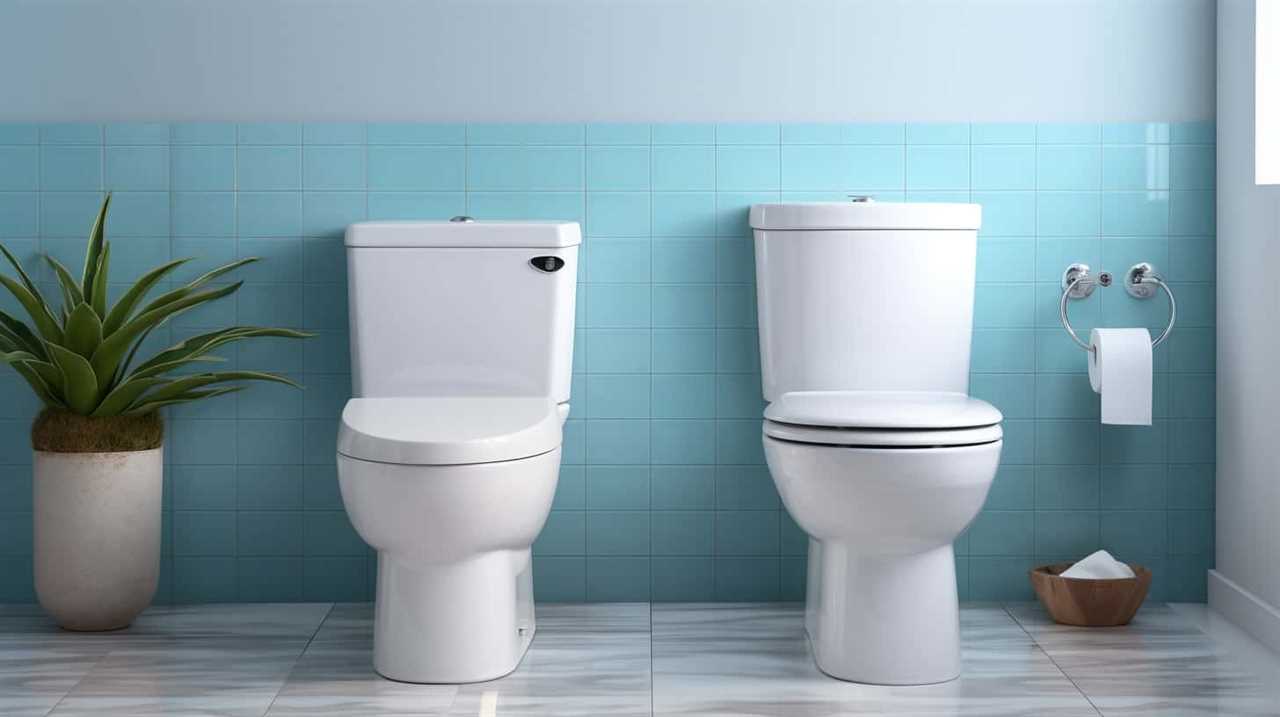
- Lack of proper waste disposal: In the absence of toilets, waste disposal was a major problem. People relied on primitive methods like open defecation or using chamber pots, which were emptied into the streets or rivers. This led to the spread of diseases and contaminated water sources.
- Limited hygiene facilities: Without toilets, there were no dedicated spaces for personal hygiene. People had to wash themselves using shared basins or public fountains, increasing the risk of infections and diseases.
- Inadequate waste management: The absence of toilets meant that waste wasn’t properly managed or treated. This led to foul odors, unsanitary conditions, and the breeding of disease-carrying pests.
Improving sanitation practices became imperative, leading to the development of flushing toilets and more advanced plumbing systems.
Disease Prevention Benefits
To address the urgent need for improved hygiene, the invention of the flushing toilet brought significant disease prevention benefits. Before the introduction of toilets, sanitation measures were rudimentary, and waste disposal was often unhygienic. This led to the rapid spread of diseases such as cholera, dysentery, and typhoid fever.
The flushing toilet revolutionized sanitation practices by providing a convenient and efficient way to remove human waste from households and communities. The flush system, combined with the use of water, effectively eliminated the accumulation of waste, reducing the risk of contamination and disease transmission.
Additionally, the flushing toilet allowed for the separation of human waste from living spaces, creating a more hygienic environment and improving overall public health. The invention of the flushing toilet marked a significant milestone in disease prevention and paved the way for improved hygiene practices worldwide.

Impact on Daily Life
One of the key impacts of the invention of the flushing toilet on our daily lives is the significant improvement in our hygiene practices. The introduction of the flushing toilet revolutionized public health by addressing the issue of proper waste disposal. Here are three ways in which the flushing toilet has improved our hygiene:
- Elimination of waste: The flushing toilet allows for the efficient removal of waste from our homes, preventing the accumulation of harmful bacteria and reducing the risk of diseases.
- Cleaner and fresher environment: With the implementation of the flushing toilet, our living spaces have become cleaner and more pleasant, eliminating unpleasant odors and reducing the presence of pests attracted to waste.
- Enhanced personal hygiene: The availability of flushing toilets in homes and public spaces has encouraged individuals to adopt better personal hygiene practices, such as washing hands thoroughly after using the toilet, leading to a decrease in the spread of infections.
The Influence of Industrialization
As we delve into the history of the flushing toilet, it’s crucial to acknowledge the profound impact that industrialization had on its invention. The influence of urban planning during this period can’t be overstated.
The rapid growth of cities and the increasing population density posed significant challenges for public health. Industrialization brought about unsanitary living conditions, leading to the spread of diseases and epidemics. The need for improved sanitation became evident, and the flushing toilet emerged as a solution.
Its invention revolutionized urban planning by providing a hygienic and efficient means of waste disposal. The introduction of flushing toilets in public spaces, such as factories and tenements, greatly improved public health, reducing the risk of waterborne diseases and creating a healthier living environment for city dwellers.
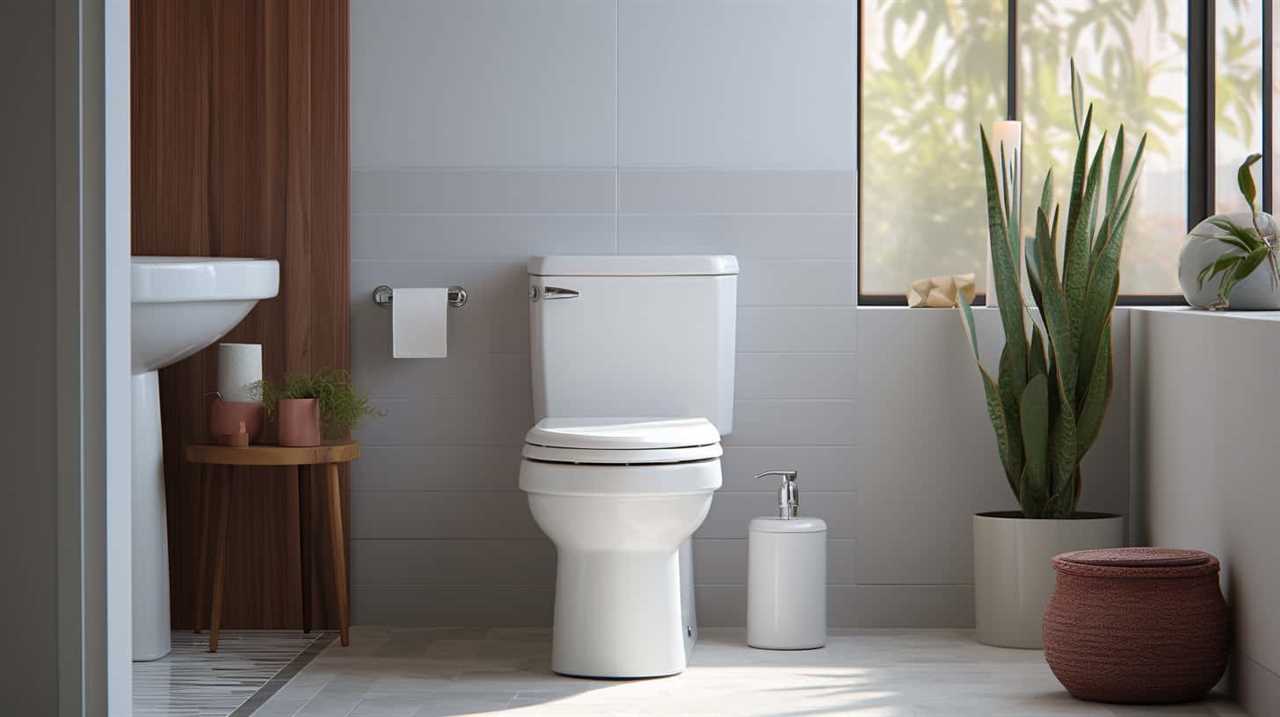
Industrialization played a pivotal role in the development and widespread adoption of the flushing toilet, transforming the landscape of urban living.
The Invention of the S-Trap
When developing the flushing toilet, we encountered a significant breakthrough with the invention of the S-Trap. This innovation addressed several challenges and led to significant sanitation advancements.
The S-Trap, named after its distinctive shape, is a curved pipe installed beneath the toilet bowl. It acts as a barrier that prevents foul odors from entering the bathroom while allowing waste to be flushed away.
The invention of the S-Trap revolutionized the way toilets functioned. It provided a more efficient and hygienic solution compared to previous models. The S-Trap effectively solved the problem of foul smells emanating from the toilet, improving the overall bathroom experience.
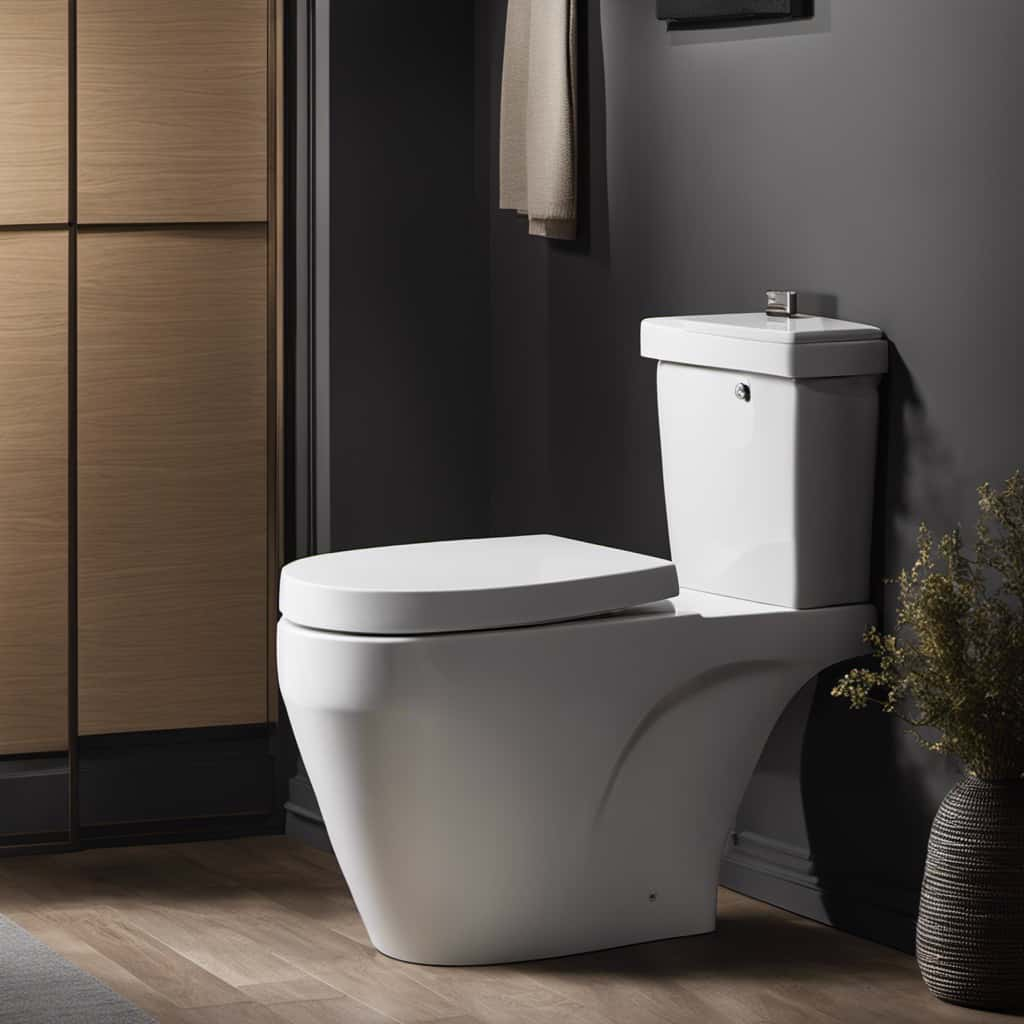
This invention also paved the way for further advancements in toilet design and sanitation practices, making the flushing toilet a more practical and desirable fixture in homes and public spaces.
The Role of Public Health Movements
During the development of the flushing toilet, our team was heavily influenced by the public health movements of the time. The role of education and public awareness played a crucial part in our decision to invent a more hygienic sanitation system.
At the time, there was a growing understanding of the link between poor sanitation and the spread of diseases. Public health movements aimed to educate the population about the importance of cleanliness and proper sanitation practices. Through these movements, people became more aware of the need for improved sanitation facilities.
Our team recognized the urgent need to address this issue and saw the flushing toilet as a solution that could help prevent the spread of diseases by eliminating waste more efficiently and effectively. Thus, the role of public health movements was instrumental in shaping the development and widespread adoption of the flushing toilet.
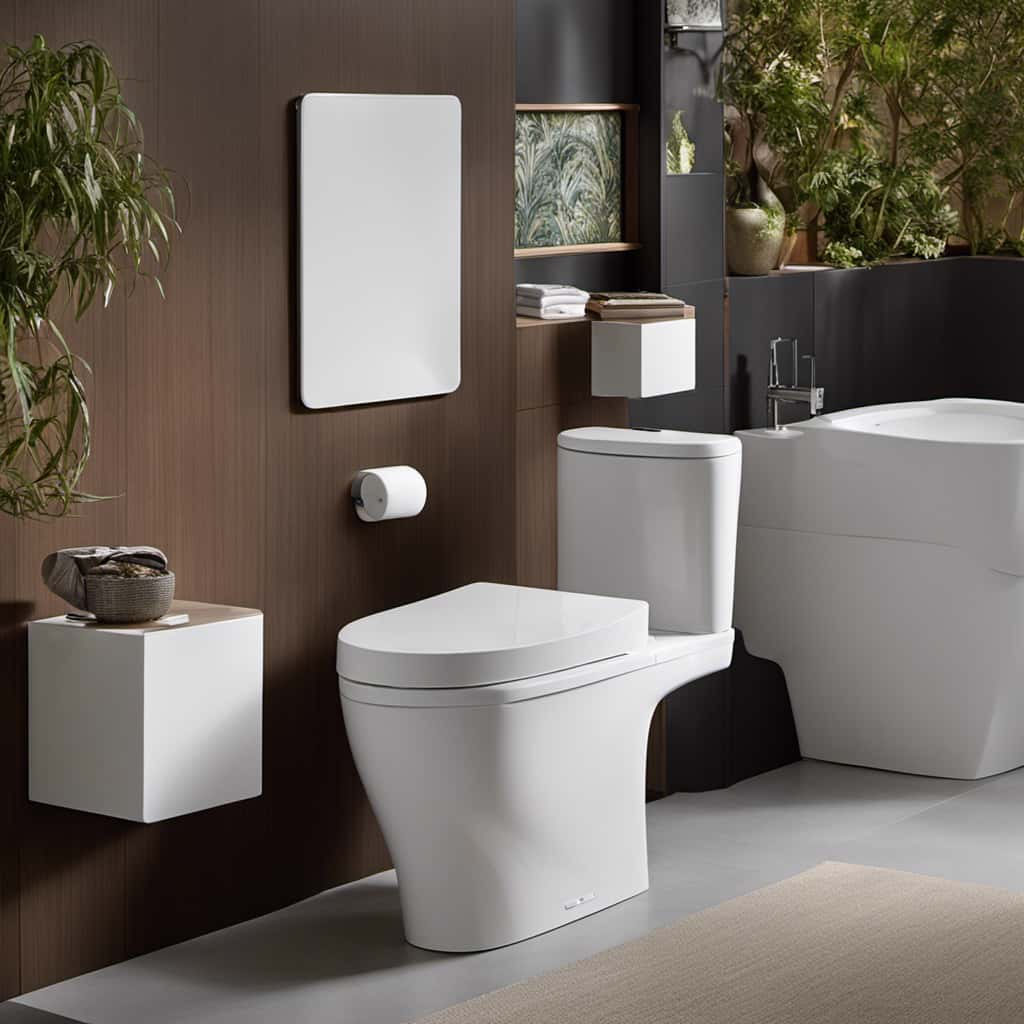
The Impact of Urbanization
The advent of urbanization greatly influenced the development and widespread adoption of the flushing toilet. As cities grew rapidly and populations increased, urbanization presented various challenges that necessitated the improvement of sanitation systems.
- Increased population density: Urbanization led to higher concentrations of people living in close proximity, resulting in a greater demand for efficient waste disposal systems.
- Sanitation and public health: The rapid urbanization posed significant risks to public health, as inadequate sanitation infrastructure could lead to the spread of diseases. The flushing toilet, with its ability to remove waste quickly and hygienically, played a crucial role in improving public health in urban areas.
- Urban infrastructure development: The need for robust urban infrastructure, including sewage systems, emerged as a direct consequence of urbanization. The development of flushing toilets was part of a broader effort to create efficient and sustainable urban infrastructure to support the growing cities.
Innovations in Plumbing Technology
One significant innovation in plumbing technology was the introduction of water-seal traps. These traps are designed to prevent the escape of foul odors and harmful gases from entering the living space. By creating a barrier of water, the traps effectively seal off the pipes, ensuring that only water and waste flow through. This invention revolutionized sanitation systems, as it eliminated the need for constant ventilation and reduced the risk of diseases spreading through the air.
In recent years, there have been further advancements in plumbing technology, particularly in the area of smart toilets. These toilets are equipped with sensors and advanced flushing mechanisms that optimize water usage. They can detect when to flush and how much water to use, thus promoting water conservation. With the increasing focus on sustainability and environmental responsibility, these innovations play a crucial role in reducing water wastage in households and public facilities.
As the world becomes more conscious of the importance of water conservation, it’s likely that we’ll continue to see further advancements in plumbing technology to support this goal.
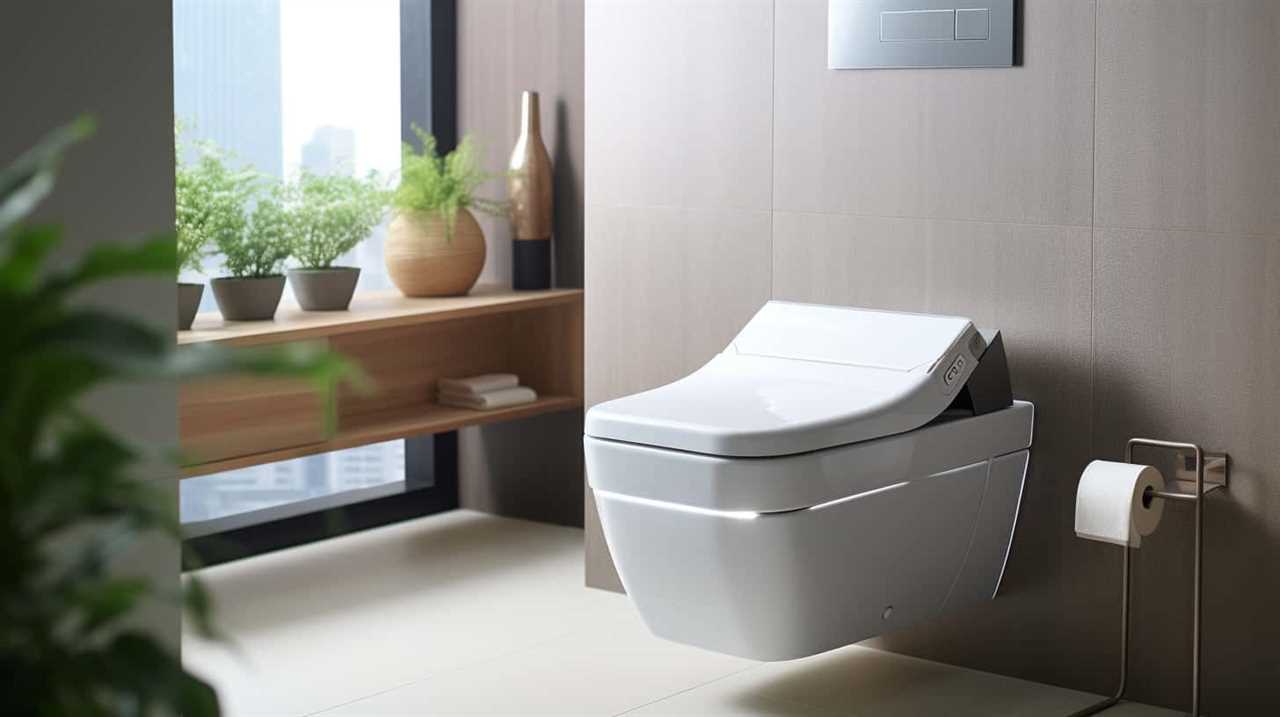
The Legacy of the Flushing Toilet
From our research on innovations in plumbing technology, it’s evident that the introduction of water-seal traps revolutionized sanitation systems. The legacy of the flushing toilet lies in its significant impact on public health and hygiene, as well as its contribution to the development of modern plumbing infrastructure. The technological advancements brought about by the flushing toilet have transformed the way we handle waste and maintain cleanliness in our homes and communities.
The legacy of the flushing toilet can be summarized in the following key points:
- Improved sanitation: The flushing toilet eliminated the need for manual waste disposal, reducing the spread of diseases and improving overall public health.
- Efficient water usage: With the introduction of water-saving mechanisms, such as dual flush systems, the flushing toilet has become more environmentally friendly by conserving water resources.
- Infrastructure development: The adoption of flushing toilets necessitated the construction of sewer systems and wastewater treatment plants, leading to the development of modern plumbing infrastructure.
Conclusion
In conclusion, the invention of the flushing toilet revolutionized sanitation practices and improved public health. It symbolizes our constant pursuit of progress and our desire for a cleaner, more hygienic world.
The flushing toilet not only eradicated the challenges of waste disposal but also paved the way for innovations in plumbing technology. Its legacy continues to impact our daily lives, reminding us of the importance of hygiene and the power of human ingenuity.







